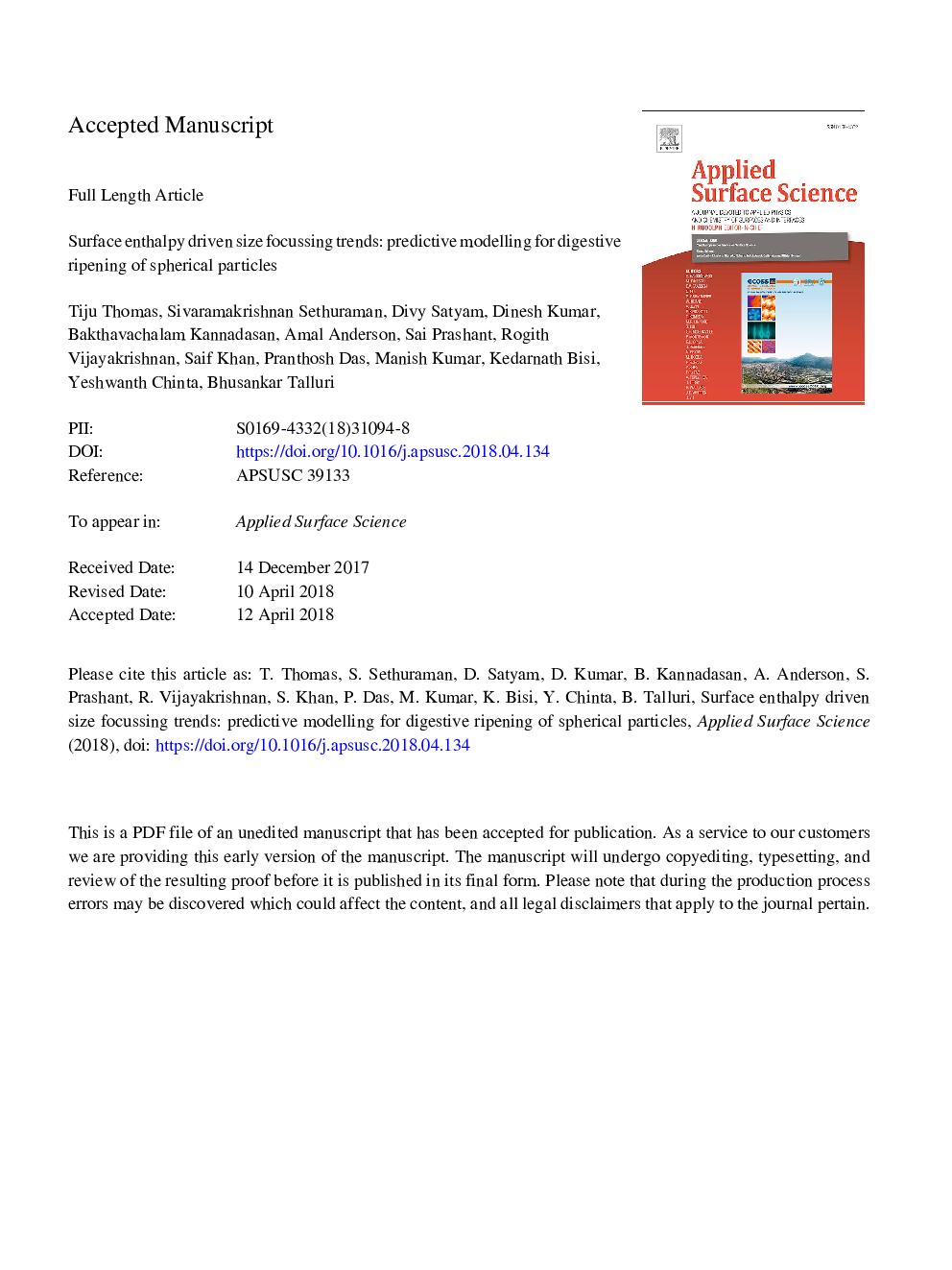| Article ID | Journal | Published Year | Pages | File Type |
|---|---|---|---|---|
| 7833777 | Applied Surface Science | 2018 | 22 Pages |
Abstract
Through digestive ripening (DR), a polydispersed colloid can be processed to obtain a monodispersed system. Recent advances in DR have rendered the process prospectively scalable, soft-chemical and green. This in turn makes it relevant for industrial-scale manufacturing of nanoparticles (NPs) and quantum dots (QDs); a crucial step forward from a technological standpoint. However predictive models and associated results that offer chemical insights for experimental design for DR are largely missing. Currently two attempts to explain DR are notable: (i) Lee's theory (essentially accounts for surface electrostatic enthalpy), and (ii) Clark's model (flow-flux modelling across interfaces around the NP). Given recent experimental results, hard-soft-acid-base interactions associated with surfactant-surface interface seem essential. In this work, an expression is written to account for hard-soft-acid-base-interactions on particle surface, and dynamics of particle size evolution is simulated using an agent based approach. Parametric studies indicate following trends for the convergent radius: (a) considerable variance with surface charge, (b) considerable variance with surface energy, (c) dependence on absolute temperature which is almost entirely due to the thermal dependence of the solubility product term, and (d) a linear relationship to the negative logarithm of product of solubility and bulk diffusion constant. The solubility term, in light of recent reports, needs to be interpreted also in terms of solute solubility in the interfacial surfactant phase. The solvation-precipitation approach provided here offer preliminary but experimentally-relevant and computationally-grounded physico-chemical insights for design of DR experiments.
Related Topics
Physical Sciences and Engineering
Chemistry
Physical and Theoretical Chemistry
Authors
Tiju Thomas, Sivaramakrishnan Sethuraman, Divy Satyam, Dinesh Kumar, Bakthavachalam Kannadasan, Amal Anderson, Sai Prashant, Rogith Vijayakrishnan, Saif Khan, Pranthosh Das, Manish Kumar, Kedarnath Bisi, Yeshwanth Chinta, Bhusankar Talluri,
